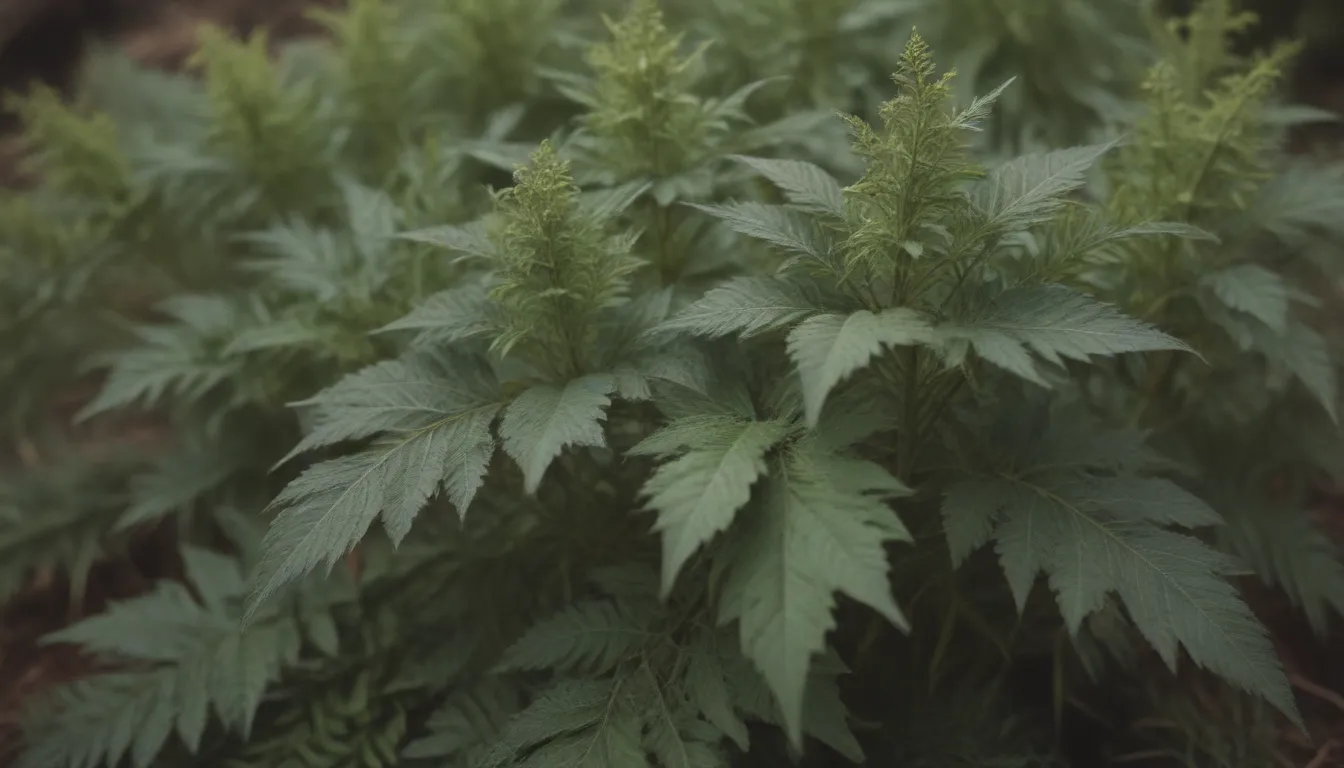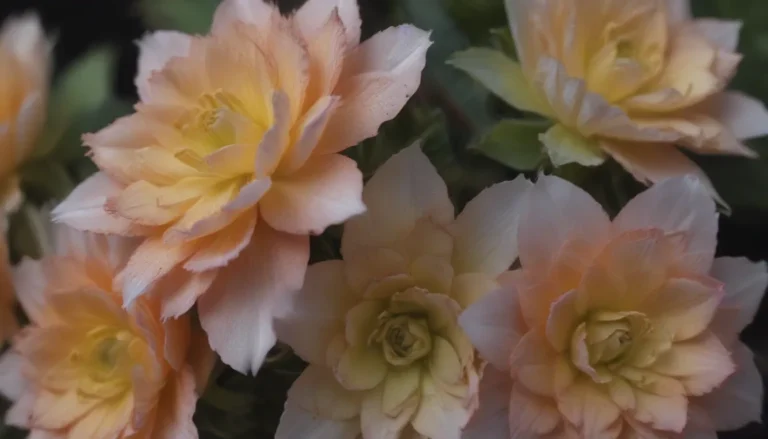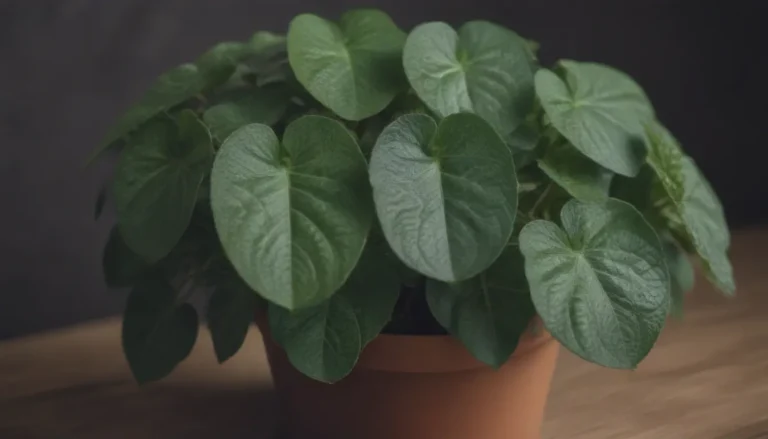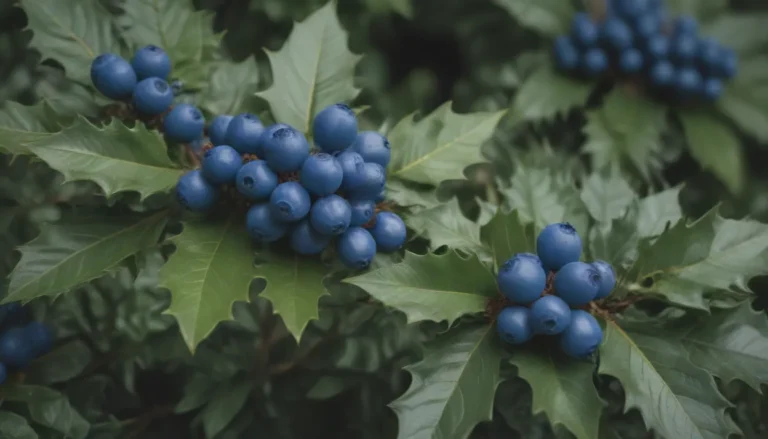All About Southernwood: Growing and Caring for this Fragrant Herb

If you’re looking to add a touch of Mediterranean flair to your garden, southernwood is the perfect plant to consider. Also known as European sage, this shrubby herbaceous evergreen boasts fragrant gray-green fern-like foliage that adds a unique texture and aroma to any landscape. Despite its name, southernwood thrives in hot, dry climates and does not do well in humid weather. In this comprehensive guide, we’ll explore everything you need to know to successfully grow and care for southernwood in your garden.
Southernwood: A Quick Overview
Before we dive into the specifics of growing and caring for southernwood, let’s take a closer look at this fascinating plant. Here are some key points to keep in mind:
- Botanical Name: Artemisia abrotanum
- Common Names: Southernwood, European sage
- Characteristics: Shrubby, evergreen, fragrant gray-green foliage
- Growth Habit: Upright
- Preferred Growing Conditions: Hot, dry climates, full sun, well-draining soil
- Toxicity: All parts of the plant are toxic to humans
Now that we have a basic understanding of southernwood, let’s explore the essential care requirements for this unique herb.
Southernwood Care Tips
To ensure that your southernwood thrives and remains healthy, it’s important to provide it with the right growing conditions and care. Here are some key care tips to keep in mind:
Light
Southernwood thrives in sunny locations, preferably receiving at least six hours of direct sunlight daily. While it can tolerate some shade, the plant will not grow as vigorously, and its lemony scent may be less apparent in shadier spots. Avoid excessive shade, as it can cause the foliage to become sparse and straggly.
Soil
Southernwood is versatile when it comes to soil types and pH levels, growing well in sandy, loamy, and clay soils. However, it is crucial to ensure that the soil is well-draining to prevent issues like root rot. Avoid waterlogged conditions, as southernwood prefers dry to moderately moist soil.
Water
Once established, southernwood is drought-tolerant and prefers dry to moderately moist conditions. Avoid overwatering, especially during hot weather or prolonged droughts. Water the plant as needed to prevent the soil from drying out completely, but avoid excessive irrigation.
Temperature and Humidity
Southernwood thrives in hot, dry climates and is not well-suited to humid conditions. While it can tolerate colder temperatures, mulching during winter in cooler regions can help protect the plant. In hot regions, southernwood is more likely to flower, while colder regions may not see flowers at all.
Fertilizer
Southernwood can thrive in infertile soils and may not require additional fertilization. However, if the plant’s foliage becomes elongated and weak, it may benefit from some compost added to the soil in spring for a nutrient boost.
Pruning
Pruning is essential for maintaining the compact shape of southernwood. Without regular pruning, the plant can become tall, weak, and spread out. Cut back the plant to the ground in early spring to encourage new growth and ensure a healthy, compact form.
Types of Southernwood
There are several varieties of southernwood to choose from, each offering unique characteristics and appearances. Some popular varieties include:
- Artemisia abrotanum ‘Cola’
- Artemisia abrotanum ‘Leprechaun’
- Artemisia abrotanum ‘Silver’
Whether you prefer a specific color or growth habit, there is a southernwood variety to suit your preferences.
Propagating Southernwood
Propagating southernwood is a straightforward process that can be done through cuttings or division. Mature plants should be divided every three to four years to maintain healthy growth. Here’s how you can propagate southernwood:
Propagating from Cuttings
- Take a cutting from a healthy southernwood plant.
- Remove the lower leaves from the cutting.
- Place the cutting in a pot with well-draining soil.
- Keep the soil moist and provide indirect sunlight until roots develop.
Propagating from Division
- Dig up a mature southernwood plant.
- Cut the plant into smaller sections, ensuring each section has roots attached.
- Replant the divided sections in well-draining soil.
- Water the newly planted divisions and monitor their growth.
By following these simple steps, you can propagate southernwood to expand your garden or share with friends and family.
Common Problems with Southernwood
While southernwood is a relatively low-maintenance plant, it is susceptible to root rot if overwatered or grown in poorly draining soil. To prevent this issue, ensure that the plant’s soil is well-draining and avoid excessive watering. By providing the right growing conditions, you can enjoy a healthy and thriving southernwood plant in your garden.
Practical Uses for Southernwood
In addition to its ornamental value, southernwood has practical uses in the garden and home. Here are some common applications for southernwood:
- Natural Insect Repellent: Southernwood is known for its insect-repelling properties and is commonly used in orchards to deter fruit tree moths and ants.
- Herb Garden Addition: Southernwood is a popular choice for herb gardens, adding fragrance and texture to culinary or medicinal herb collections.
- Historical Use: Traditionally, southernwood was used as an air freshener, adding a pleasant lemony, camphor-like fragrance to indoor spaces.
By incorporating southernwood into your garden, you can benefit from its practical uses while adding a touch of Mediterranean charm to your outdoor space.
Key Differences Between Southernwood and Wormwood
While both southernwood (Artemisia abrotanum) and wormwood (Artemisia absinthium) belong to the Asteraceae family and share similar characteristics, there are some key differences between the two plants. Southernwood is native to more southern parts of Europe and thrives in hot, dry climates, while wormwood is more adaptable to cooler regions. Understanding these distinctions can help you choose the right plant for your garden based on your climate and growing conditions.
In conclusion, southernwood is a versatile and attractive herb that can enhance your garden with its unique fragrance and foliage. By following the care tips outlined in this guide and exploring the various varieties available, you can successfully grow and enjoy southernwood in your outdoor space. Whether you’re looking for a natural insect repellent, a fragrant addition to your herb garden, or a Mediterranean-inspired plant for your landscape, southernwood is a fantastic choice that offers both beauty and functionality.
Remember to provide your southernwood plant with the right growing conditions, including ample sunlight, well-draining soil, and proper pruning, to ensure its health and longevity in your garden. With a little care and attention, your southernwood plant will thrive and delight you with its aromatic foliage for years to come.





